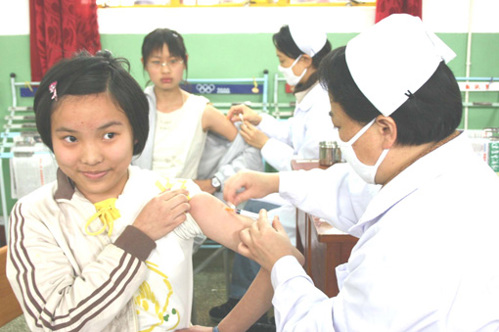The Facility’s major aims were to:
- Improve China’s capacity to strengthen its health systems
- Protect its population against emerging infectious diseases
- Halt and reverse the spread of HIV.
From 2007-2012, CAHHF approved 52 research and development activities. These were led by 29 Chinese organisations, working in partnership with 26 Australian partner institutions.
CAHHF contributed in a variety of ways, including:
- engagement with health policy and health system strengthening, especially in current health reform areas
- promotion of sustainable China-Australia partnerships
- development of capacity in China’s health system
- promotion of gender equality
- demonstration of regional impact.
The majority of activities directly supported the five key priorities of China’s health care reform:
- Accelerate development of the basic health insurance system (3 activities)
- Establish a national essential drugs system (2 activities)
- Strengthen the primary health care service system (21 activities)
- Steadily expand access to basic public health services (18 activities)
- Advance public hospital reform (5 activities)

Supporting health policy development and health system strengthening:
- CAHHF research findings or policy recommendations have been used in 54 national or local level policy documents.
- CAHHF policy relevant research has been published in 152 articles in national journals and eight articles in international journals.
Creation of sustainable Australian and Chinese partnerships:
- CAHHF has strengthened existing partnerships and supported new partnerships by providing additional avenues for collaborative work on policy-relevant topics.
- CAHHF-supported partnerships are now leading to formal longer-term relationships that have the potential to be sustained and expand beyond CAHHF.
Increased capacity within China’s health system:
- CAHHF activities produced stronger policies, strategies, guidelines and technical resources in key health reform areas, which are better informed by evidence.
- New models for better delivery of health services were demonstrated through CAHHF-supported activities.
- CAHHF facilitated a shared understanding between policy-makers and research institutions on how to generate evidence for effective health policy.
Greater gender equality in health:
- CAHHF improved capacity to integrate gender into the design and implementation of activities in order to achieve greater gender equality in health.
Regional impact:
- CAHHF supported activities on emerging infectious diseases have high potential for positive regional outcomes. China is an important player in regional and international efforts to prevent and control such diseases.
- CAHHF supported global health diplomacy training involving senior health officials from the Pacific Islands, building capacity to contribute to the global policy environment for health.

Funding Partners
- Australian Agency for International Development (AusAID)
Partners + Collaborators
Oversight for CAHHF was provided by a bilateral program committee, comprising:
- Chinese Ministry of Health
- Australian Department of Health and Ageing
- Chinese Ministry of Commerce
- AusAID
Project
Team
Meet the project team. Together, we are translating research into better health, for all.



